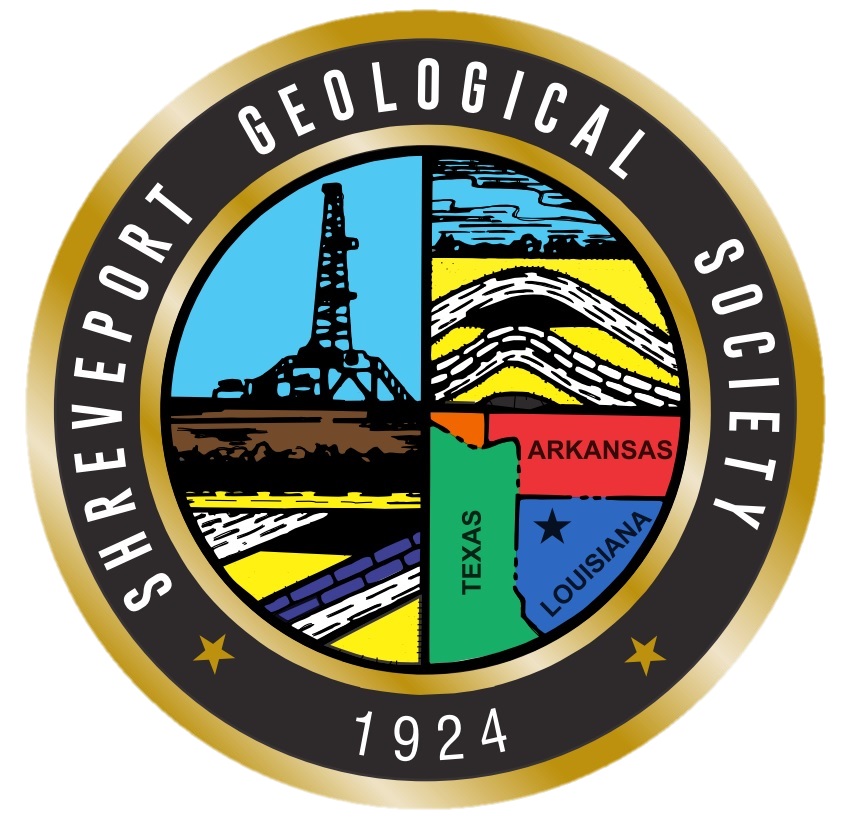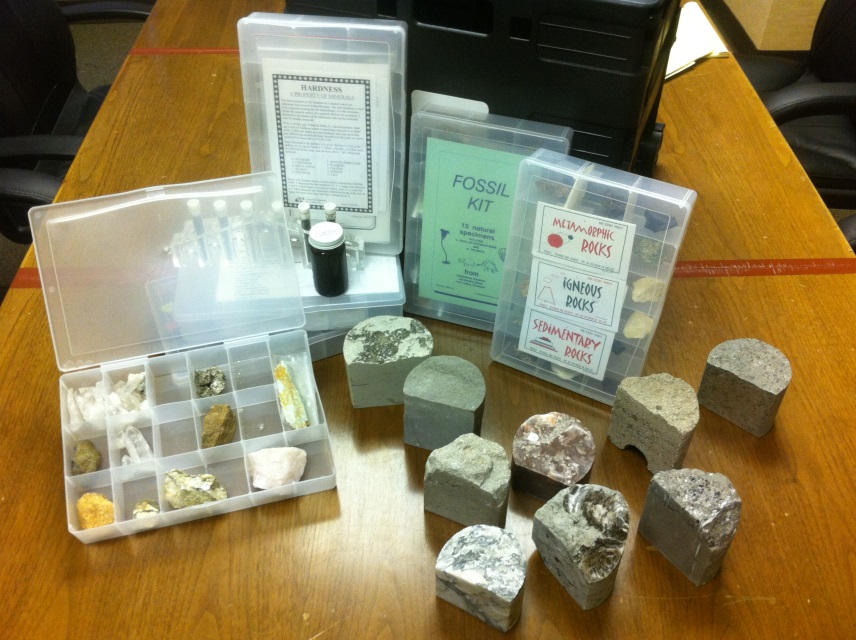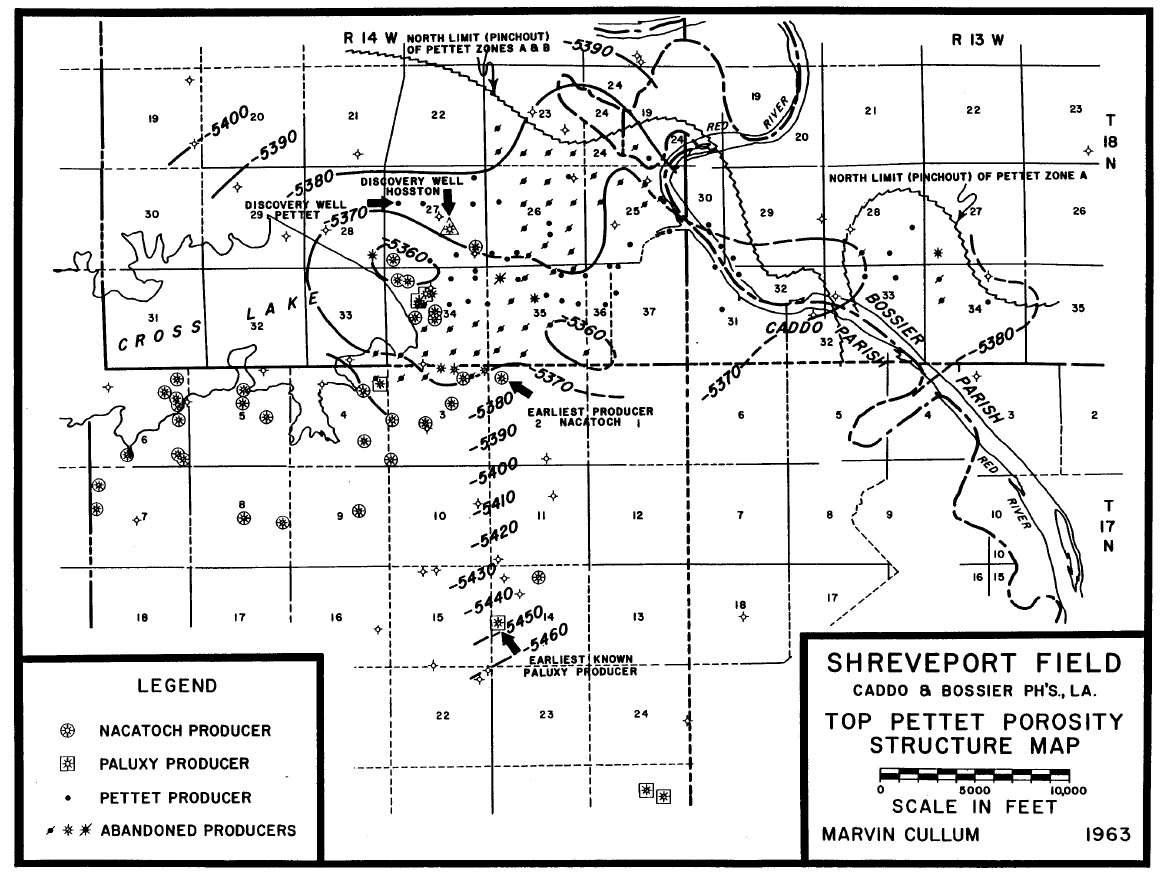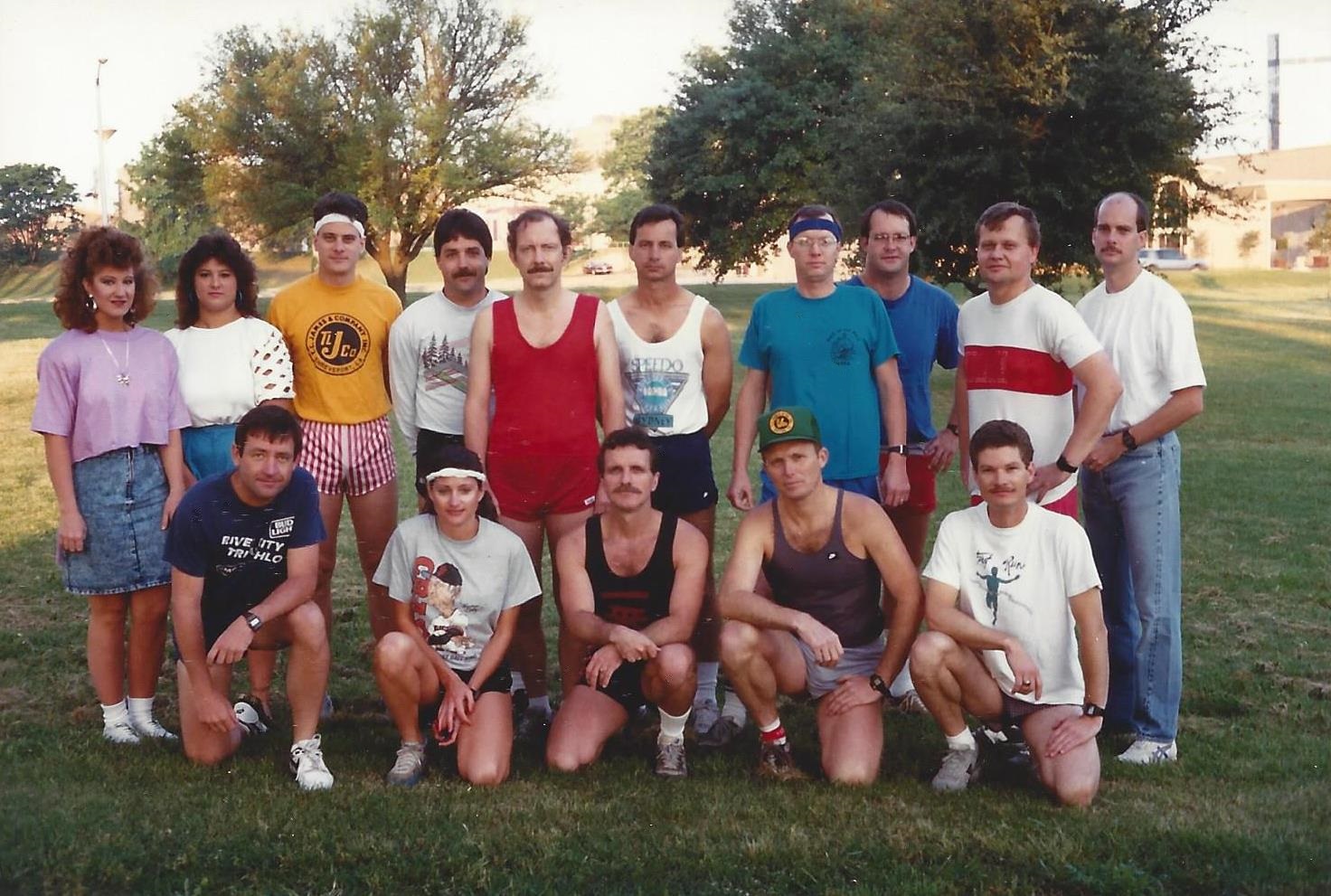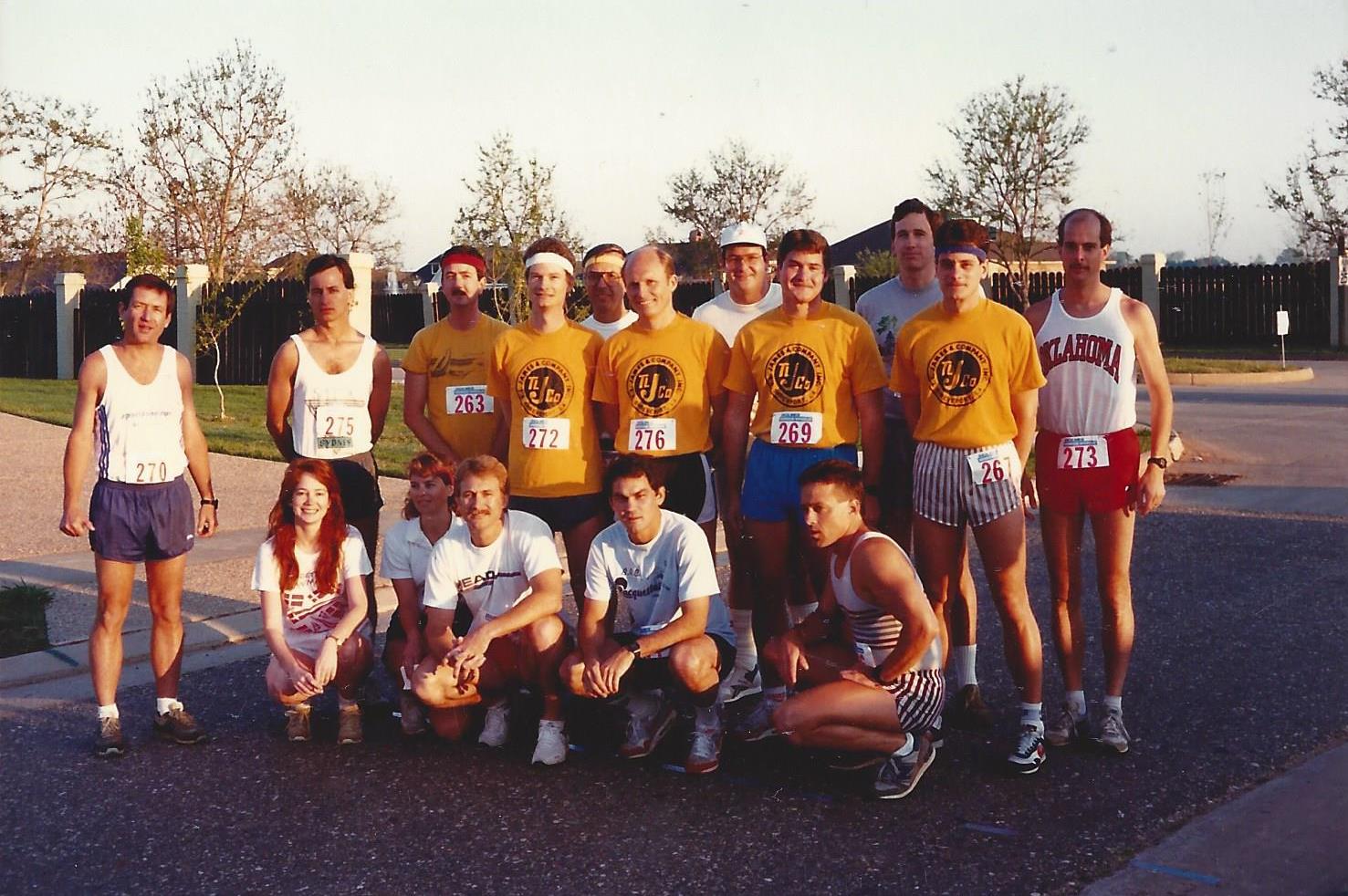History of the Shreveport Geological Society
The first formal association of Shreveport geologists was organized on December 5, 1919 as the Shreveport Section of the Southwestern Geological Society (not to be confused with the Southwestern Association of Petroleum Geologists, which became the AAPG). Chester A. Hammill was the mail proponent of the organizational effort, supported by John R. Roberts, Julius Segall, S. S. Raymond, and J. W. Bostick. The 21 founding members attending that meeting elected Mr. J. Y. Snyder as Chairman. Snyder was not recorded as being in attendance, confirming the inadvisability of missing Society meetings! Hamill was elected Secretary.
In 1923, Shreveport hosted the AAPG Annual Convention and conducted its first field trip. Forty-two geologists, including Sidney Powers from Houston, inspected Upper Cretaceous outcrops and the Murfreesboro diamond mine in southwest Arkansas. The field trip was quite an event, and the newspapers of the time were fascinated with these men who drove all over the countryside knocking on rocks. Nineteen annual field trips were conducted without interruption from 1923 through 1941. In 1951, Walter H. Spears of Shreveport served as general chairman for the AAPG Convention in St. Louis.
On October 3, 1924, the Shreveport Section withdrew from the Southwestern Geological Society (which also included the Austin and Dallas sections), and reorganized as the Shreveport Geological Society. Twenty-five members were present at the first official meeting of the society on October 17, 1924. The first officers were W. E. Hopper, president; W. C. Spooner, vice president; and H. G. Schneider, secretary-treasurer. The society became affiliated with the AAPG eight years later in 1932.
During the 1930's and 40's, the major oil companies were formed and by the late 40's and early 50's, thirty firms had offices in Shreveport, including several corporate headquarters. Membership increased steadily from 25 in 1924 to 104 in 1940 and reached approximately 500 by 1958. Great strides were made in understanding the geology of the Ark-La-Tex area during this period, thanks to the work of numerous nationally known geologists located in Shreveport. These included Roy T. Hazzard, B. W. Blanpied, Thomas H. Philpott, W. C. Spooner, Jules Braunstein, Warren B. Weeks, and Clarence L. Moody. These men made the early stratigraphic designations and correlations which are, for the most part, still used today.
The society recognized early in its history the benefit of sharing geologic information through publications. Beginning with the 1939 publication of the 14th Annual Field Trip Guidebook, Upper and Lower Cretaceous of Southwest Arkansas, the society has emphasized this aspect of its endeavors. In 1946, SGS published the first two volumes of Reference Reports on Certain Oil and Gas Fields in North Louisiana, South Arkansas, Mississippi, and Alabama. They were unprecedented at the time and became examples for other geological societies to follow in the future. Volumes III through VII have continued to provide new information for geologists interested in the Ark-La-Tex area.
In June 1950, Thomas H. Philpott represented the SGS in meetings with the New Orleans Geological Society and the South Louisiana Geological Society which led to the formation of the GCAGS in 1951, with Shreveport as a charter member. The society hosted the GCAGS annual convention for the first time in October 193, and thereafter in 1963, 1976, 1984, 1993, and 2001.
By the time Shreveport hosted the convention in 1963, the exodus of major companies from Shreveport had begun. The resulting decline in membership continued into the early 1970's when fewer than 300 members remained. This was a difficult period for SGS as it was necessary to continuously replace officers and committee members due to transfers. Although other GCAGS societies suffered and one disbanded, the independents and consultants who remained in Shreveport were determined to survive. This commitment was demonstrated in January 1967 when the SGS was one of the local geological societies to host the first AAPG sponsored Continuing Education course. Dr. Lloyd C. Pray lectured on “Concepts on Carbonated for Petroleum Geologists.”
In the mid-1970's and early 1980's, the society had cause for optimism. Natural gas was in short supply and oil prices increased steadily as a result of OPEC policies. Geologists were in demand and membership in SGS rose to over 700 in 1983-84. Amid the exuberance and optimism of the period, only a few began to notice the storm clouds on the horizon.
The changes in federal tax laws, an oversupply of natural gas, and ultimately, the crash of oil prices in 1986 had a dramatic effect on the society. As companies went out of business or downsized in response to changing economics, SGS members faced dwindling employment opportunities. Many members were forced to seek employment outside the oil and gas industry resulting in a sharp decline in membership. At the close of 1992, society membership stood at 331 and as of March 2003 the number of members was 261 as a result of attrition and lack of entry level geologists.
SHREVEPORT gEOLOGICAL SOCIETY bOARD, 1995
Despite the loss of members SGS remained resolute in its commitment to the objectives under which it was founded in 1924, ”…the increase of knowledge, especially of Louisiana, Southern Arkansas, and East Texas, and the promotion of fellowship among geologists in this area.” The monthly meeting has continued to be the major focus of society activity, providing an opportunity for both education and fellowship. Normally scheduled on the 3rd Tuesday, September through May, the meetings have been held at the Petroleum Club of Shreveport since 1975. Continuing education courses are also sponsored on a regular basis.
The society has also demonstrated its concern for our community and the science of geology beyond the limits of the oil and gas industry. Over the years, many geology students have received society scholarships at area colleges and universities. In 1986, through the efforts of Lane Sartor, the W. & Tweatie Scarborough Baird Scholarship Trust was established. This perpetual trust, in the amount of $100,000. will continue to provide funds for worthy geology majors indefinitely. Besides scholarships, SGS promotes the study of geology through active involvement at the elementary, middle school, and high school level. Each year numerous members volunteer their services as in-class resources and science fair judges, giving students the opportunity to meet and interact with geologists first hand. The society also began supporting the Louisiana Region I Science and Engineering Fair though various age level and category awards in 1987. For the younger set, the society sponsors a mock geological “dig” each year in conjunction with the community-sponsored Red River Revel. Nothing captures a child's imagination like dirt and the allure of hidden “treasure!”
In 1997 the SGS formed an Environmental Committee to address sensitive issues concerning preservation of our natural resources. From 1998 through 2000 the SGS donated a total of $10,000 to Sci-Port, which is a local scientific wonderland of exhibits that include a geological display created by the SGS.
In January of 2000 the SGS assembled a geological school kit used to present show and tell presentations to local schools. In 2001 the SGS put its Volume I though Volume VII of field papers on CD.
Last but not least, SGS members have always shared good times of fun and fellowship. The annual golf tournament dates back to the 1950's and continues to be a popular event. The social calendar has been expanded to include fishing and tennis tournaments and a 5K run.
Through the years, society members have given unselfishly of their time and talents to work on society and civic projects. Some have gained national prominence for their contributions to geology and their leadership in the oil and gas industry. All have benefited from the opportunity for service, continuing education, and friendship which the society provides.
